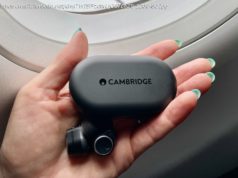The progress might be slow, but the focus and effort is undeniable.
Australia’s skills gap problem could potentially cost the economy AU$10 billion in growth over the next four years. According to a recent report by RMIT and Deloitte Access Economics, Australia will need 156,000 more digital technology workers by 2025, which is roughly one in four jobs created during that period. A large contributing factor to that problem is there just aren’t generally enough people enrolling into science, technology, engineering, or mathematics (STEM) subjects. A more concerning issue within that is there are even fewer women than men. At the end of last year, Australia’s Chief Scientist Dr Alan Finkel revealed the country’s STEM workforce graduate figure for females was around 29% in 2016 and 27% five years earlier. He said, while it was a «move in the right direction», there was still a long way to go before the country would reach gender parity. «It’s influenced enormously by home and parents. The decision for a young woman is influenced enormously by peer pressure, teachers, and role models, and there is a lot of effort… to try to redress it, but it takes time,» he said, while fronting a Senate Committee. «There has been progress, but the rate of progress is very, very small.» This lack of improvement in numbers was confirmed by a study undertaken by a researcher at the Australian National University (ANU). The research revealed that while there are large numbers of initiatives in Australia aimed at increasing female participation in STEM, there is still little evidence of how effective these programs are. Despite this, tertiary educators remain undeterred from trying, and are placing greater focus and effort than ever before to improve the gender parity in STEM subjects offered by their respective institutions. See also: Engineering careers are hot. Here’s how women can catapult into the male-dominated field. (TechRepublic) Melbourne’s Monash University boasts it has the highest numbers of female IT students in Australia, with around 30% constituting in its coursework degrees, and 39% making up graduate research. But it acknowledges more could be done and continues to make a concerted effort to show female students, such as those still in high school through outreach programs, that «IT isn’t just a geeky masculine stereotype, which it has been for so long, and that it’s for everyone». «We’d love to achieve more of an equilibrium with the large number of men that we currently have,» Yolande Strengers, associate professor of digital technology and society and associate dean of equity, diversity, and inclusion (EDI) at Monash University, told ZDNet. «It’s a long road dependant on many, many things. One of the things that really creates challenges for all departments of IT is that there just isn’t the numbers of women interested in enrolling into these kinds of subjects. That’s why we have to make our courses appealing and attractive.» The university also hosts an alumni mentoring program within the STEM faculties that link up current female and non-binary students with those who previously studied at Monash and have gone on to have careers in IT.
Домой
United States
USA — software Women in STEM: What Australia's tertiary educators are doing to achieve gender...






